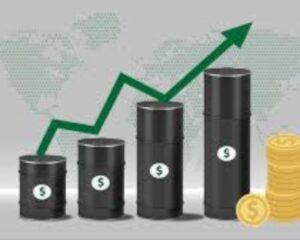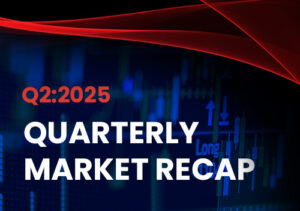Inflation in the U.S. rose more than expected in January, strengthening the case for the Federal Reserve to delay any interest rate cuts. The Consumer Price Index (CPI) increased by 0.5% for the month, bringing the annual inflation rate to 3.0%, exceeding economists’ expectations of 2.9%. This marks a 0.1% increase from December’s inflation level.
Core inflation, which excludes volatile food and energy prices, rose 0.4% in January, pushing the year-over-year figure to 3.3%. This was also higher than market forecasts of 3.1%. The report triggered a strong market reaction, with the Dow Jones Industrial Average falling more than 400 points and bond yields rising sharply.
Fed’s Response and Market Expectations
Federal Reserve Chair Jerome Powell, in his recent congressional testimony, emphasized that the central bank remains cautious about reading too much into a single month’s data. However, the unexpectedly strong inflation report has led investors to push back expectations for the next rate cut to at least September. Some analysts believe that if inflation remains high, the Fed may only cut rates once in 2025 instead of the multiple reductions previously anticipated.
Powell also reiterated that the Fed relies more on the Personal Consumption Expenditures (PCE) price index, which will be further clarified with the upcoming Producer Price Index (PPI) report. Until then, policymakers are likely to remain on hold, assessing the overall trend in inflation and economic growth.
Key Drivers of Inflation
Shelter costs were a major factor driving inflation in January, rising 0.4% and accounting for about 30% of the total increase. The metric that tracks homeowners’ estimated rental values rose 0.3% for the month and was up 4.6% year-over-year. Economists note that higher mortgage rates are pushing more people into the rental market, where vacancy rates remain near record lows.
Food prices also contributed to inflation, rising 0.4% in January. A significant driver of this was a 15.2% jump in egg prices, attributed to an outbreak of avian flu that forced farmers to cull millions of chickens. This was the largest monthly increase in egg prices since 2015. Over the past year, egg prices have surged by 53%. Other food categories showed mixed trends, with non-alcoholic beverages rising 2.2% while fresh vegetables, such as tomatoes, declined by 2.6%.
Energy prices increased by 1.1%, with gasoline prices rising 1.8% in January. Meanwhile, motor vehicle insurance costs jumped 2% for the month, marking an 11.8% annual increase. Used car and truck prices also rose by 2.2%.
Political and Economic Implications
President Trump has continued to pressure the Federal Reserve to cut rates. Just 30 minutes before the CPI report was released, he posted on Truth Social, calling for immediate rate cuts, arguing that lower interest rates should accompany his newly announced tariffs on steel and aluminum. However, with inflation running hotter than expected, Powell and the Fed may have little room to accommodate Trump’s requests in the near term.
The CPI report also showed that rising inflation has eroded wage gains, as real earnings remained flat despite a 0.5% increase in nominal wages. This means that while workers are earning more, higher prices are offsetting their purchasing power, which could impact consumer spending in the coming months.
Markets now anticipate that the Fed will remain cautious before making any monetary policy changes. The likelihood of a rate cut in the first half of 2025 has significantly diminished, and traders have adjusted their expectations accordingly. The next major data release will be the PCE inflation report, which could provide further clarity on whether inflation is stabilizing or remains persistent.





